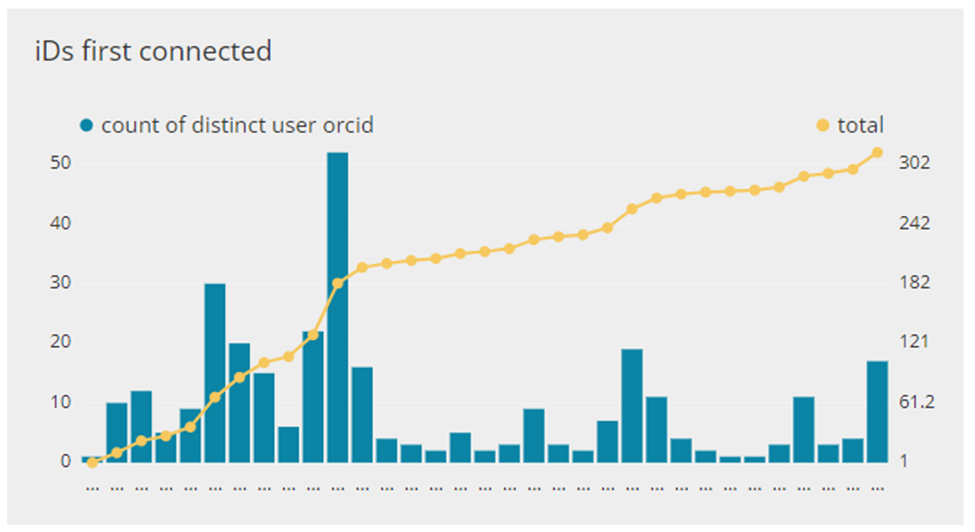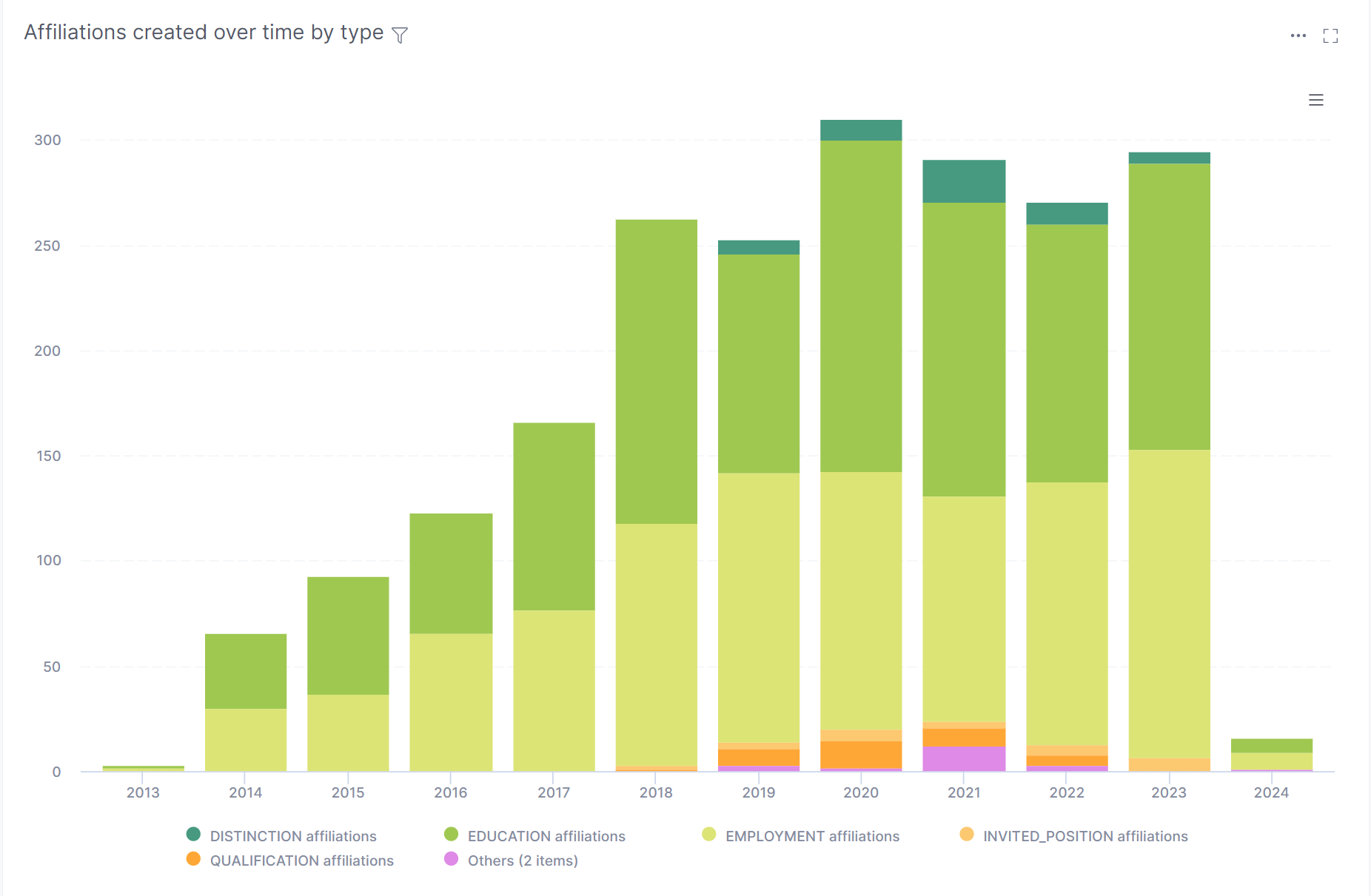The University of Nevada Las Vegas (UNLV) reinvigorated their ORCID outreach efforts during the global pandemic in 2020, engaging the university’s stakeholders with successful results. UNLV, an ORCID US Community member, was granted an R1 research status in 2018. With this new distinction, more support for researchers to increase research activity has become a priority.
This blog post was adapted from a Community Showcase #7 presentation by Christina Miskey, Research Impact Librarian at UNLV, in February 2022. Miskey leads ORCID adoption efforts at UNLV.
Challenges
The global COVID-19 pandemic in 2020 posed some challenges for ORCID outreach efforts at UNLV, making it difficult to connect with researchers in person. In addition, lack of sufficient staffing prior to that year affected outreach and engagement work by library staff, making it difficult for UNLV to maintain a consistent outreach and education program for the promotion of ORCID. Even though previous work had been done, staff would essentially be “starting from scratch.”
To overcome these obstacles, Miskey met with library staff and staff in campus offices to obtain a variety of different perspectives about ORCID outreach efforts. She reviewed and updated old documentation and outreach materials, and then created new materials during the first six months of the pandemic.
“So, you can probably imagine how difficult it was to build those relationships and garner interest in any new things when everyone was overwhelmed with the uncertainty and everything. So that was definitely a big challenge.” (Christina Miskey, Community Showcase #7, 14:50).
ORCID Outreach and Engagement
Despite these challenges, the implementation of Interfolio’s Faculty 180, a system already integrated with ORCID, provided a foundation to make connections with faculty, students and staff on campus. With this foundation in place, Miskey created new documentation about databases UNLV was already subscribed to that had existing ORCID compatibilities, such as DimensionsWizard, a database with funding information and a built-in search and link wizard in ORCID. Miskey also shared that UNLV subscribed to Pivot, a key-word searchable database for finding funding opportunities with an already established ORCID integration. In partnership with the Office of Sponsored Programs, faculty were encouraged to use all of these ORCID connections.
During the pandemic, options for engagement were limited to virtual interactions, so Miskey had to find creative new ways to get the ORCID message out to faculty and students, with efforts including:
- Updates to digital resources, such as the ORCID@UNLV library guide
- The promotion of a pre-existing tutorial video: ORCID@UNLV
- Guide for Folio integration by the Office of Faculty Affairs
Miskey also developed a variety of workshops for faculty and students; shared efforts to build partnerships with other campus offices such as the Graduate College, Office of Faculty Affairs, and the Office of Sponsored Programs; and created the library-sponsored Research Impact Challenge, an event to increase scholarly research impact and reach. Miskey incorporated ORCID material in this event “which resulted in nearly 40 new iDs being created on the same day” (Christina Miskey, Community Showcase #7, 17:46).
Miskey explained that UNLV is in the beginning stages of implementing more ORCID integrations and outreach for the future, such as integrating UNLV’s institutional repository with ORCID, collaborating more with the UNLV Office of Sponsored Programs and cooperating with UNLV campus adoption of Academic Analytics and its use of ORCID.
Results
In February 2022, over 2,200 ORCID users were registered with the university email domain, with about 44% of affiliations as graduate students. From April 2020 to February 2022, about 1,000 new users created an ORCID account, which was an increase over the previous years. In addition, in the same time span, the ORCID@UNLV libguide had over 1,500 visitors with 73% being new visitors.
Figure 2, below, shows the increase in connected iDs corresponding with outreach efforts made by staff–this demonstrates how valuable outreach has been in increasing ORCID adoption at UNLV.
In 2023, the ORCID@UNLV libguide had 653 visitors with 63% being new visitors. The number of affiliated iDs was adjusted down to 2,136. However, Miskey shared that, overall, numbers are consistently higher from 2020-2023.

Fig. 2: First connected iDs with each spike coinciding with outreach events at UNLV over time.

Fig. 3: Affiliation report data of connected iDs from 2013-2024. Data collected as of Jan. 2024.
Lessons Learned:
The following strategies, Miskey shared, were developed based on some valuable lessons learned after years of doing outreach, building relationships and encouraging engagement around ORCID at UNLV:
- Combining education about ORCID with other topics can generate more faculty interest – Awareness of ORCID can be combined with other topics such as workshops focusing on metrics, publishing and grants. In addition, themed events during the year (i.e. Open Access Week) provide opportunities to promote ORCID.
- Working closely with subject librarians – Seeking input and feedback from subject librarians develops a better understanding of the discipline-specific contexts needed to make connections with faculty, students and offices on campus.
- Continuously exploring new ways to reach faculty and students – Coordinating outreach with campus stakeholders provides an opportunity to work across multiple units, helping to build stronger relationships with staff and providing a shared exchange of support for outreach with one another.
For more in-depth insight on lessons learned and potential strategies to help promote ORCID adoption, check out Rebuilding ORCID Campus Outreach During a Pandemic by Christina Miskey, Scholarly Communication Librarian for Research Infrastructure at University of Nevada, Las Vegas (published in Library Marketing Journal, Vol. 5, Issue 1, Summer 2021).
Please contact orcidus@lyrasis.org for any questions.
